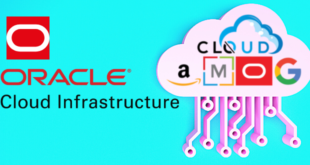DevOps is the combination of cultural philosophies, practices, and tools that increases an organization’s ability to deliver applications and services at high velocity: evolving and improving products at a faster pace than organizations using traditional software development and infrastructure management processes. This speed enables organizations to serve their customers better and compete more effectively in the market.

Under a DevOps model, development and operations teams are no longer “siloed.” Sometimes, these two teams are merged into a single team where the engineers work across the entire application lifecycle, from development and test to deployment to operations, and develop a range of skills not limited to a single function.
Quality assurance and security teams may also become more tightly integrated with development and operations and throughout the application lifecycle in some DevOps models. When security is the focus of everyone on a DevOps team, this is sometimes referred to as DevSecOps.
These teams use practices to automate processes that historically have been manual and slow. They use a technology stack and tooling which helps them operate and evolve applications quickly and reliably. These tools also help engineers independently accomplish tasks (for example, deploying code or provisioning infrastructure) that normally would have required help from other teams, which further increases a team’s velocity.
DevOps Practices
The following are DevOps best practices:
- Continuous Integration
- Continuous Delivery
- Microservices
- Infrastructure as Code
- Monitoring and Logging
- Communication and Collaboration

Continuous integration is a software development practice where developers regularly merge their code changes into a central repository, after which automated builds and tests are run. The key goals of continuous integration are finding and addressing bugs quicker, improving software quality, and reducing the time it takes to validate and release new software updates.

Continuous delivery is a software development practice where code changes are automatically built, tested, and prepared for production. It expands upon continuous integration by deploying all code changes to a testing environment and a production environment after the build stage. When continuous delivery is implemented properly, developers will always have a deployment-ready build artifact that has passed through a standardized test process.

The microservices architecture is a design approach to build a single application as a set of small services. Each service runs in its own process and communicates with other services through a well-defined interface using a lightweight mechanism, typically an HTTP-based application programming interface (API). Microservices are built around business capabilities; each service is scoped to a single purpose. You can use different frameworks or programming languages to write microservices and deploy them independently, as a single service, or as a group of services.

Infrastructure as code is a practice in which infrastructure is provisioned and managed using code and software development techniques, such as version control and continuous integration. The cloud’s API-driven model enables developers and system administrators to interact with infrastructure programmatically and at scale instead of setting up and configuring resources manually. Thus, engineers can interface with infrastructure using code-based tools and treat infrastructure like how they treat application code. Because they are defined by code, infrastructure and servers can quickly be deployed using standardized patterns, updated with the latest patches and versions, or duplicated in repeatable ways.
Developers and system administrators use code to automate operating system and host configuration, operational tasks, and more. The use of code makes configuration changes repeatable and standardized. It frees developers and systems administrators from manually configuring operating systems, system applications, or server software.
With infrastructure and its configuration codified with the cloud, organizations can monitor and enforce compliance dynamically and at scale. Infrastructure that is described by code can thus be tracked, validated, and reconfigured in an automated way. This makes it easier for organizations to govern changes over resources and ensure that security measures are properly enforced in a distributed manner (e.g. information security or compliance with PCI-DSS or HIPAA). This allows teams within an organization to move at a higher velocity since non-compliant resources can be automatically flagged for further investigation or even automatically brought back into compliance.

Organizations monitor metrics and logs to see how application and infrastructure performance impacts the experience of their product’s end user. By capturing, categorizing, and then analyzing data and logs generated by applications and infrastructure, organizations understand how changes or updates impact users, shedding insights into the root causes of problems or unexpected changes. Active monitoring becomes increasingly important as services must be available 24/7 and as application and infrastructure update frequency increases. Creating alerts or performing real-time analysis of this data also helps organizations more proactively monitor their services.

Increased communication and collaboration in an organization is one of the key cultural aspects of DevOps. The use of DevOps tooling and automation of the software delivery process establishes collaboration by physically bringing together the workflows and responsibilities of development and operations. Building on top of that, these teams set strong cultural norms around information sharing and facilitating communication through the use of chat applications, issue or project tracking systems, and wikis. This helps speed up communication across developers, operations, and even other teams like marketing or sales, allowing all parts of the organization to align more closely on goals and projects.
 Cloud AMOG Be a Part of the Largest Cloud Community
Cloud AMOG Be a Part of the Largest Cloud Community




